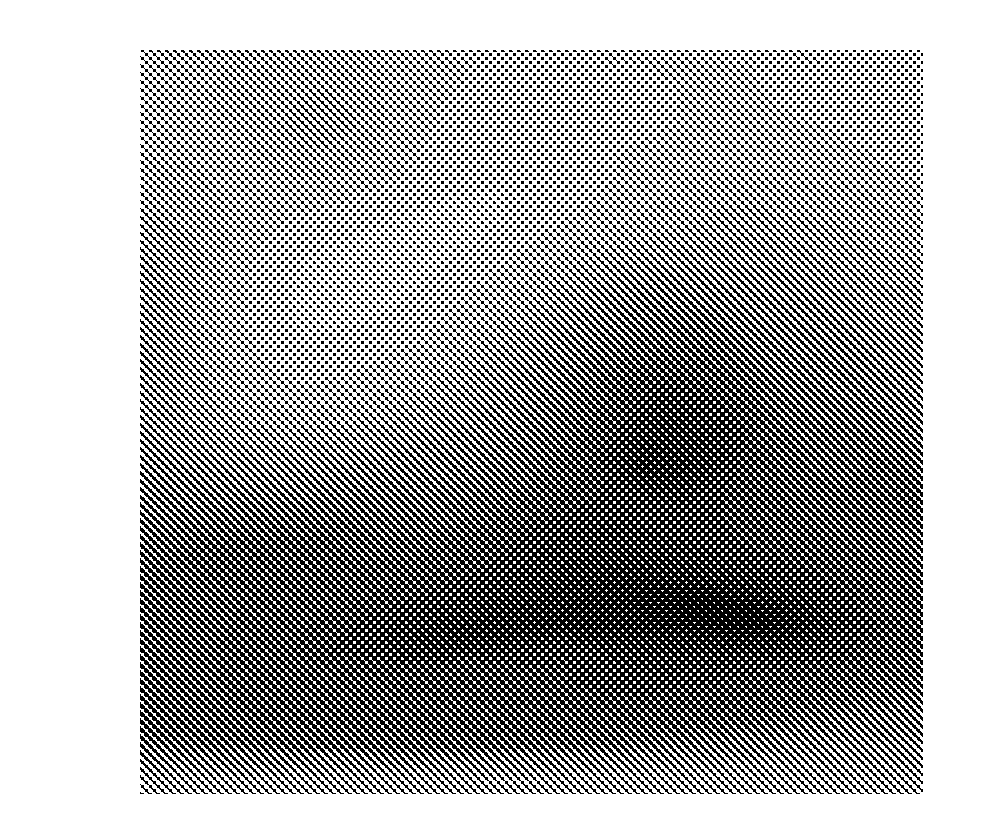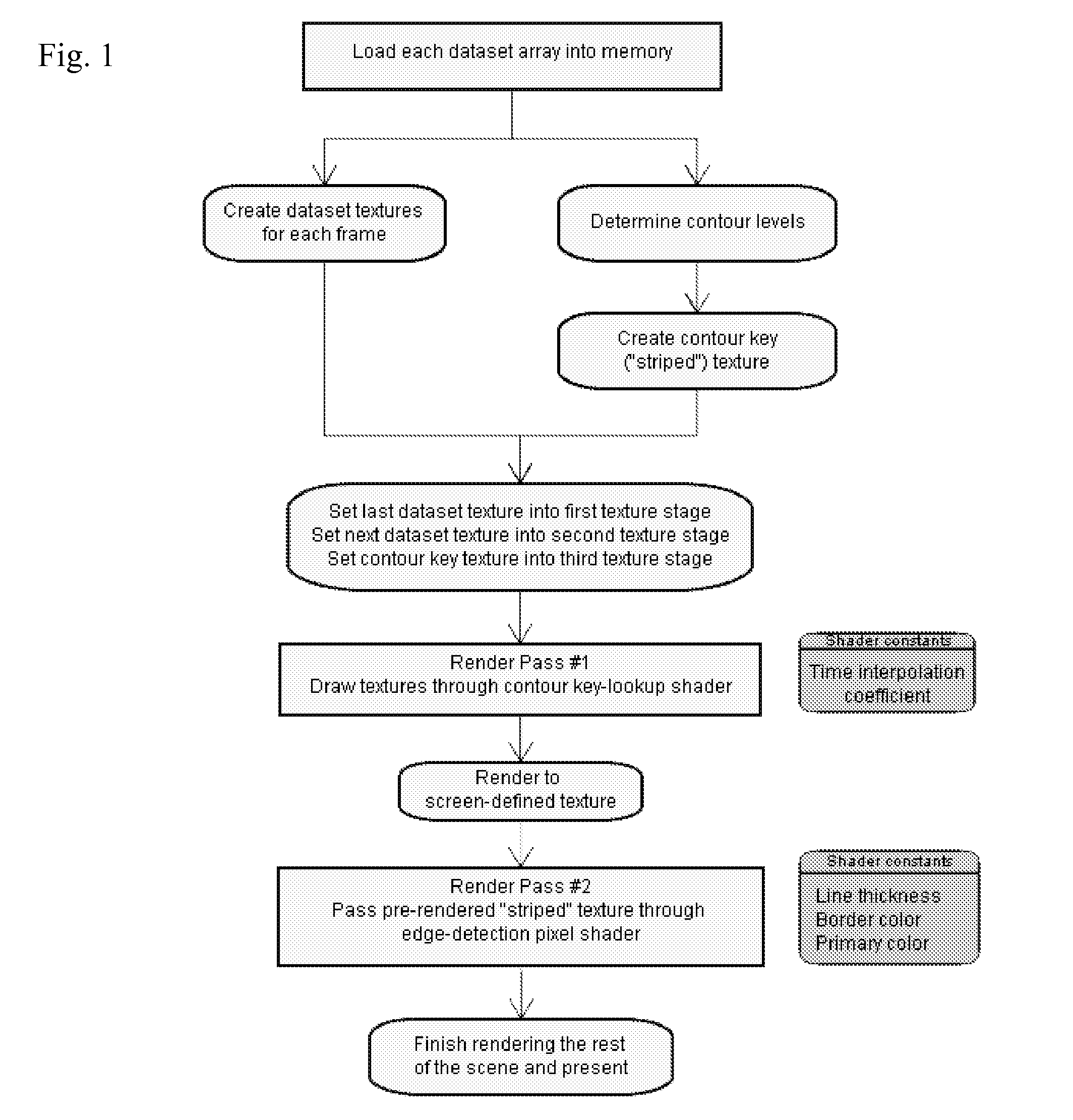Technique for real-time rendering of temporally interpolated two-dimensional contour lines on a graphics processing unit
- Summary
- Abstract
- Description
- Claims
- Application Information
AI Technical Summary
Benefits of technology
Problems solved by technology
Method used
Image
Examples
Embodiment Construction
[0019]The present invention assumes the preexistence of a display environment in which basic access to graphics hardware through DirectX 9 has been established and also assumes the preexistence of the datasets to which the present contouring algorithm will be applied having been loaded into respective two-dimensional floating point system memory arrays with each array representing the respective, discrete time intervals by which the present time-interpolation feature functions, which is indicated by the first flowchart step in FIG. 1.
[0020]Each data array is firstly converted into a respective, corresponding texture to be processed by the graphics processing unit. If the target graphics device supports texture data formats beyond the common 32-bit RGBA format, an embodiment of the present invention will scan for and use a single-channel (often designated as “grayscale”) 16-bit texture format, since only one channel of texel data is used. Luminance texture formats (in particular, “D3...
PUM
 Login to View More
Login to View More Abstract
Description
Claims
Application Information
 Login to View More
Login to View More - R&D
- Intellectual Property
- Life Sciences
- Materials
- Tech Scout
- Unparalleled Data Quality
- Higher Quality Content
- 60% Fewer Hallucinations
Browse by: Latest US Patents, China's latest patents, Technical Efficacy Thesaurus, Application Domain, Technology Topic, Popular Technical Reports.
© 2025 PatSnap. All rights reserved.Legal|Privacy policy|Modern Slavery Act Transparency Statement|Sitemap|About US| Contact US: help@patsnap.com



